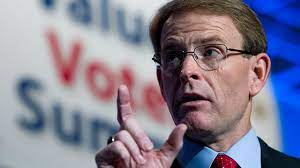They say the worst thing you can have in live television is “dead air”. Suddenly in front of a room full of government and media dignitaries, with broadcasting history literally hanging in the balance, that is exactly what we were facing. Dead air.
We were there along with other young people who shared the unique experience of being media users, not just media consumers. We were from the “Kids 4” television project in Sun Prairie, Wisconsin. Kids4 had been on the air since 1978, and was an educational partnership between the local public access cable channel and the American Council for Better Broadcasting (ACBB, later renamed as the National Telemedia Council )
Joining us there in Washington, was a group from the KIDS ALIVE! Project in Bloomington, Indiana. Together, we were hosting a live cultural exchange via satellite with a group of young people from down under in Brisbane Australia, who hosted the popular children’s program WOMBAT on Australia's Channel 7.
The kids from the Australian television show went first, showing an amazing video montage of their studio, the gold coast of Australia and the stories they produced there at Channel 7 in Brisbane. Then it was our turn. Or so we thought...
A technician from COX Cable Television, hurried into the room and whispered in the ear of a nearby adult that the Video tape player in the satellite truck, was not working, and therefore none of the prepared footage we had brought with us to Washington could be shown. So we proceeded to do what we always did when doing live television. We improvised.
Still, with a ballroom full of media dignitaries watching you , plus trying to fill time with stuff off the top your head, AND cope with at least a 5 second time delay between you and the people you were trying to interview, it was bit tense, even by our standards. But the end result turned out to be something amazing and unexpected.
That one technical glitch turned what would have been a largely scripted exchange into an actual conversation.
Instead of following a script, we talked. Asking each other about school, about hobbies and what was it about working with television that interested them, as well as sharing our own experiences as kids learning to use media and not be used by it.
Of course at the time, it felt like a disaster.
Looking back on that day, now, more than four decades ago, I marvel at how much the world has changed. At the time, what we were doing in Washington DC that day was not all that remarkable from a technical standpoint. Live satellite broadcasts were hardly unusual in 1981. Yet from a cultural and educational standpoint, the Kids-to-Kids interconnect was nothing short of revolutionary.
As much as I say that live satellite television was commonplace in 1981, that isn’t to say the mechanics of it were simple. The path of the satellite interconnect - from Washington, D.C. to , Brisbane, Australia was a complex series of relays starting with a signal carried by cable to trucks parked just outside in the courtyard of the hotel. From there, the signal was beamed by microwave across town to PBS Headquarters.
Finally from there the signal travelled via land lines to the studios of Channel 7, Brisbane, where the Australian children received it and responded. Their messages back to the U.S. travelled in the reverse direction using landlines and satellites back to Washington, to the on-site satellite dish located in the courtyard of the Capitol Holiday Inn, which fed the signal into the ballroom room where it was seen on large screens by all of us there.
.
The Interconnect didn’t radically change the media landscape, or advance broadcast technology. What it did do, was in the space of a few short hours make the world a remarkably smaller place. It showed that live satellite broadcasting could be used for more than breaking news and sporting events
The interconnect was the first global Zoom meeting.
The greatest take away from that day for those of us fortunate enough to have been part of it, was the power of broadcast technology to bridge distances and connect people in new and exciting ways. It was, at least for me, a life changing experience. A live demonstration of the power of broadcast technology to connect people and be a platform for sharing experiences and ideas, in (nearly) real time.
Media Literacy is more crucial now than ever before. Teaching young people how to harness the power of media, and connectivity as tools for education and empowerment is more important today, than it has ever been.
Teaching young people to be media users, not just media consumers has always been at heart of the mission of Kids 4 and The ACBB / National Telemedia Council . That mission, which took a gigantic step forward in 1981 continues today. Now as the International Council for Media Literacy You can find out more about the IC4ML and it's mission and legacy on their website,: https://www.ic4ml.org.
Still more than 40 years on, it remains an experience that played a tremendous role in shaping my path in life I am so very grateful to have been a part of it.
































